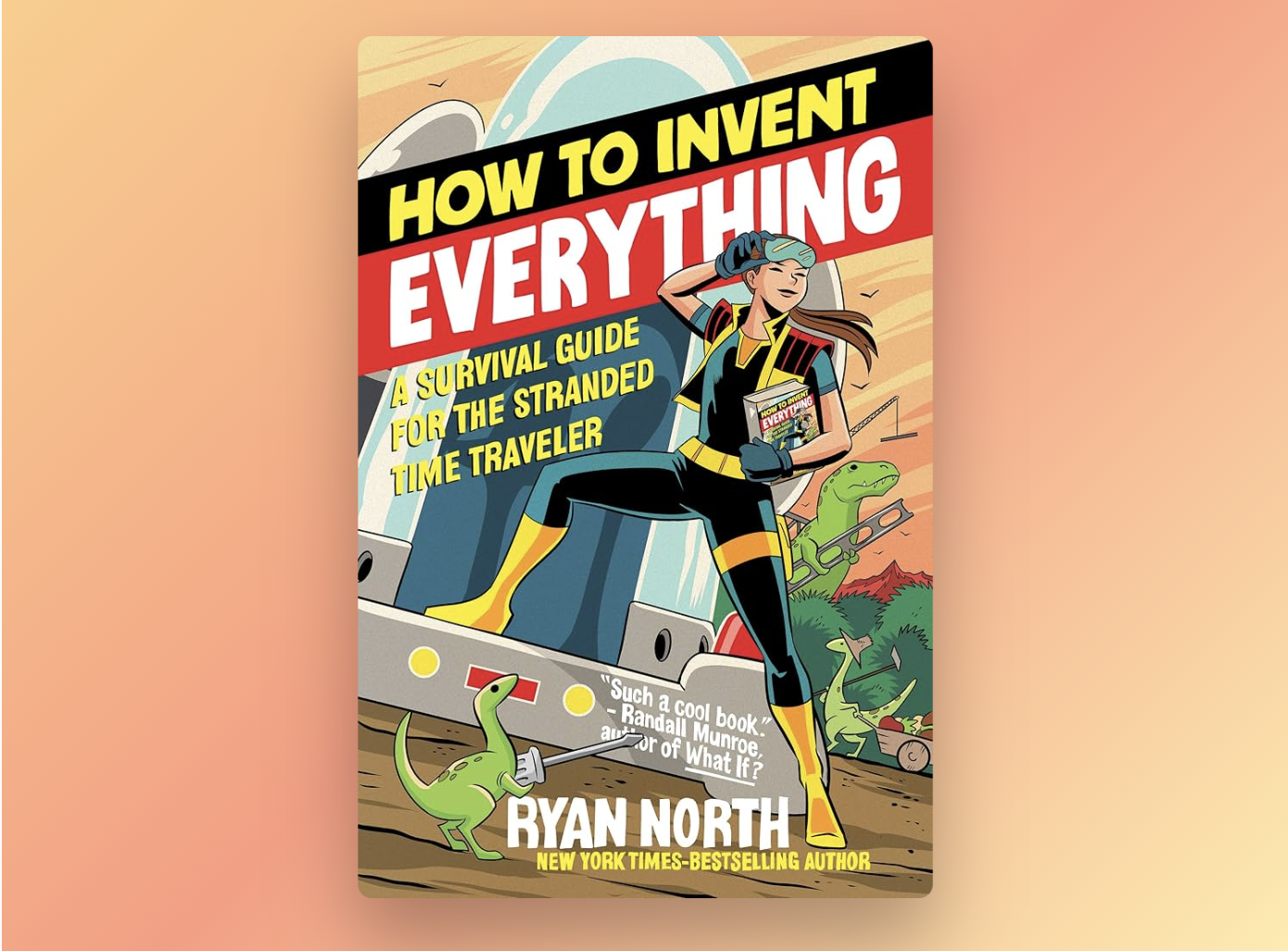Книга “How to Invent Everything” оформлена как руководство для несчастливого путешественника во времени, оставшегося без пути домой. Это целая энциклопедия по технологиям, которая объясняет как получить нужные материалы с нуля и заодно проходится по всей истории человечества.
Самое забавное это сочетание двух противоположных трендов. С одной стороны, люди и раньше вовсе не были тупыми. Огромная часть технологических открытий требует наличие всей предыдущий цепочки изобретений и открытых материало.
Бесполезно отправлять Петру I чертеж АК-74, потому что просто не будет нужной стали и массового машинного производства, чтобы сделать что-то такое.
С другой стороны, на некоторые “очевидные” вещи у людей ушли столетия. Что-то открыли намного раньше в Китае. А некоторые вещи мы забыли и потеряли на тысячу лет (например, цемент).
Дальше избранные цитаты.
Хочу заметить, что мне очень нравится язык, которым вся книга написана:
People wrote on the skin of animals (aka “parchment”), which meant that if you were alone and wanted to write a book, you first had to either raise or hunt down an animal and then slaughter it, which obviously slowed the creative process down just a little bit
Секрет цемента был потерян вместе с медленным падением Рима:
Cement and concrete reached an early peak in the Roman Empire, but after that empire fell around 476 CE, the technology was all but lost for a millennium. There were some cement structures built after that date, but the knowledge required was kept within guilds, rarely written down and never disseminated. It was only when an obscure Roman manuscript from 30 BCE (written by the architect and engineer Vitruvius, whose quotation graces this section) was rediscovered in a Swiss library in 1414 CE that the secrets of cement and concrete were recovered.*
Строго говоря, ничего не мешало людям сделать воздушный шар еще в Средние века. Ведь даже братья Монгольфьеры не понимали, почему именно их шар летит.
In other words, it turns out that to invent human flight, the dream of thousands and thousands of generations of humanity, you only need some fabric and some fire. That’s it. And it still took us until 1783 CE to figure it out. We have made a lot of hay in this text out of how long it takes humans to invent something even after they’ve got all the prerequisite technologies, but this is gosh-darned humiliating.
Цветные краски долгое время были невероятной роскошью, стоит только вспомнить, как римляне с огромным трудом получали пупурный пигмент перемалывая моллюсков. Так вот, в древнем Египте открыли искусственный синий пигмент 3000 до н.э., после чего он не был известен до повторного открытия в 1704.
The synthetic blue pigment discovered in 1704 CE was not actually the world’s first artificial pigment! It was the first one Europeans came up with, but back around 3000 BCE the Egyptians—also annoyed at how expensive grinding up lapis lazuli was—managed to produce an artificial version of the color by combining under heat some quartz sand, copper, calcium carbonate, and alkaline ash. This technique was used for thousands of years, but by 400 CE, every single person who’d known how to make it had died without telling someone else the technique or writing it down, and the knowledge of how to make an inexpensive substitute for one of the most expensive colors on the planet was lost.
Для морский путешествий крайне важно уметь определять широту(север-юг) и долготу(запад-восток). И если для первой достаточно измерить угол между Солнцем и горизонтом, то для долготы нужно знать точное время. И если часы люди научились делать сравнительно давно, сделать прибор для измерения времени, который выдержит качку оказалось очень сложной задачей.
Longitude is trivial, assuming you believe that keeping track of what time it is at the prime meridian isn’t the sort of thing that will stymie humanity for thousands of years! This is the point where we regret to inform you that keeping track of what time it is at the prime meridian absolutely is the sort of thing that will stymie humanity for thousands of years.
По сути, вам нужно знать, в какой момент случается полдень в референсной точке (например, дома) и где Солнце находится у вас. И задача эта настолько сложная, что автор предпочел бы сделать примитивный радиопередатчик и приемник. Представьте: вы в Лондоне, как только наступает астрономический полдень, вы передаете сигнал для всех своих кораблей, которые в этот момент могут определить точные координаты и понять, где они находятся.
Цинга – забытая болезнь морских походов, которая возникает из-за недостатка витамина С. И самое смешное тут, что найдя решение проблемы, человечество его забыло. Неоднократно. Прямо много раз.
But sadly, in what can fairly be described as “a comedy of errors, only not funny,” Europeans—who generally like to think of themselves as being a pretty savvy lot—managed to forget and then rediscover this fact about vitamin C at least seven more times over the next five hundred years, including rediscoveries in 1593 CE, 1614 CE, 1707 CE, 1734 CE, 1747 CE, and 1794 CE, until the idea finally stuck in 1907.*
Антибиотики являются одним из самых важных открытий. Но хороший пенициллин еще оказывается нужно найти.
Here’s the catch: it took about 2000L of Fleming’s mold culture to produce enough penicillin to treat a single badly infected wound. A better source was found in 1942 CE by one Mary Hunt in the garbage of a Peoria, Illinois, grocery store: a “pretty, golden” mold on a cantaloupe that produced 200 times more penicillin than Fleming’s strain. This mold was eventually exposed to X-rays in the hope the radiation would cause enough artificial mutations that a strain that produced even more penicillin would evolve, and serendipitously, that worked!
Даже если вы знаете нотную грамоту, вам нужно будет настроить любой собранный инструмент, а для этого требуется известный инструмент…
Turns out that the entire modern musical framework is based around you being able to produce a 440Hz sound wave from scratch at any point in history.
